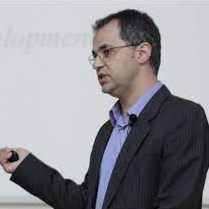Pharmaceutical and Nutraceutical Potential of Polyphenolic Natural Compounds
A special issue of Plants (ISSN 2223-7747). This special issue belongs to the section "Phytochemistry".
Deadline for manuscript submissions: closed (15 February 2023) | Viewed by 15528
Special Issue Editors
Interests: anticancer research; pharmaceutical botany; pharmacognosy; alternative toxicology testing
Special Issues, Collections and Topics in MDPI journals
Interests: the design and synthesis of new anticancer agents; the design and synthesis of new antimicrobial compounds; studies and structural analysis; the isolation and analysis of natural compounds with anticancer effects; computer-assisted drug design studies
Special Issues, Collections and Topics in MDPI journals
Special Issue Information
Dear Colleagues,
Polyphenols represent a large family of natural compounds that are widely distributed in medicinal and dietary plants. These phenolic compounds are important for the growth and development of plants, and are used as a defense system against fungi, bacteria, viruses, insects and herbivores. From a chemical perspective, polyphenols are structurally diverse, and comprise major classes of flavonoids, coumarins, phenolic acids, tannins, lignans and stilbenes. Polyphenols are commonly found in nutritional products, such as fruits and vegetables, as well as beverages, such as wine, beer and tea, and represent an important role in the human diet. Epidemiological and clinical evidence indicate that consuming a diet based on foods that are high in polyphenols reduces the risk of several chronic diseases. A large array of in vitro and in vivo preclinical studies on plant extracts that are high in polyphenols or specific isolated compounds highlights the vast pharmacological potential of this class of natural compounds.
This Special Issue aims to provide a multidisciplinary survey of the recent studies on polyphenols, focused, in particular, on the prevention of diseases, as well as on the improvements in health. The manuscripts of interest include research of any type on polyphenols, either as pure compounds, vegetal extracts or food products. Both preclinical and clinical study designs, as well as observational studies, are welcome. We invite original research articles and specialized critical reviews.
Dr. Octavian Tudorel Olaru
Dr. George Mihai Nitulescu
Guest Editors
Manuscript Submission Information
Manuscripts should be submitted online at www.mdpi.com by registering and logging in to this website. Once you are registered, click here to go to the submission form. Manuscripts can be submitted until the deadline. All submissions that pass pre-check are peer-reviewed. Accepted papers will be published continuously in the journal (as soon as accepted) and will be listed together on the special issue website. Research articles, review articles as well as short communications are invited. For planned papers, a title and short abstract (about 100 words) can be sent to the Editorial Office for announcement on this website.
Submitted manuscripts should not have been published previously, nor be under consideration for publication elsewhere (except conference proceedings papers). All manuscripts are thoroughly refereed through a single-blind peer-review process. A guide for authors and other relevant information for submission of manuscripts is available on the Instructions for Authors page. Plants is an international peer-reviewed open access semimonthly journal published by MDPI.
Please visit the Instructions for Authors page before submitting a manuscript. The Article Processing Charge (APC) for publication in this open access journal is 2700 CHF (Swiss Francs). Submitted papers should be well formatted and use good English. Authors may use MDPI's English editing service prior to publication or during author revisions.
Keywords
- bioactive compounds
- plant extracts
- natural medicines
- pharmacologically privileged heterocycles
- flavonoids
- coumarins
- tannins
- functional foods
- phenolic-rich foods







